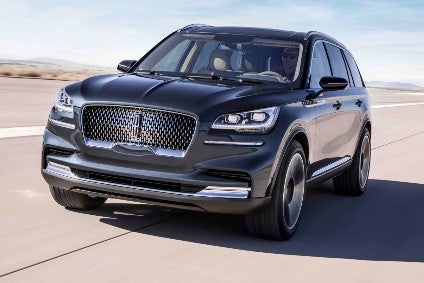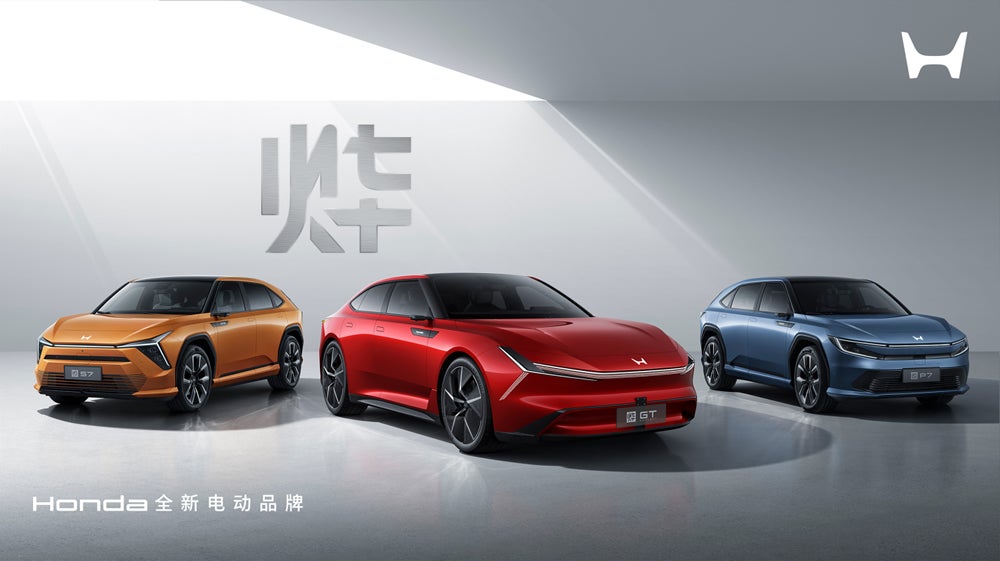
Having first examined the current and likely next generations of all Ford cars, followed by SUVs and pick-ups, the Ford Motor Company future vehicle series now turns to Lincoln.
Cars
The MKZ, a mid-size sedan which was introduced for the 2013 model year, is sliding steeply down the US sales charts and will probably end the year with deliveries at around 20,000 units. Is that enough to justify a replacement model? There is nothing inherently wrong with the car, it’s simply a case of it being in the last years of a scheduled production cycle and also in a segment that has been greatly affected by the SUVs boom.
CD622, which might be called Zephyr, is the proposed successor for the MKZ. It is said to be due for release in 2020 but that may apply only to China as the market segment where the MKZ competes continues to shrink in North America. Ford will likely price the Zephyr against the Audi A4 L, Mercedes C-Class L, BMW 3 Series iL and Jaguar XEL. There will almost certainly be a PHEV version too which would replace the MKZ Hybrid.
As for the architecture, Ford seems likely to base this model on China’s next generation Mondeo which would mean using C2. However, some sources believe that it will instead be a vehicle for Ford’s CD6 architecture. This is believed to be the same as Lincoln’s D6 platform which can reportedly be for front-, rear- and all-wheel drive applications.
The Continental, Lincoln’s largest car, had its second birthday in September. The main markets for this big sedan are the US, China and to a lesser extent, Canada and Mexico. All production is at a plant in Michigan. This model also replaced the MKS, production of which ceased in May 2016.
How well do you really know your competitors?
Access the most comprehensive Company Profiles on the market, powered by GlobalData. Save hours of research. Gain competitive edge.

Thank you!
Your download email will arrive shortly
Not ready to buy yet? Download a free sample
We are confident about the unique quality of our Company Profiles. However, we want you to make the most beneficial decision for your business, so we offer a free sample that you can download by submitting the below form
By GlobalDataThe first engine to be announced was a biturbo 3.0-litre petrol V6, with drive to all wheels and a six-speed automatic. Power and torque are 400hp and 400 lb-ft. A 335hp 2.7-litre biturbo V6 and a 305hp naturally aspirated 3.7-litre V6 are also available in North America.
In China, there is a front-wheel drive four-cylinder variant. This is powered by Ford’s 2.0-litre EcoBoost engine, while the biturbo V6 is also available in the People’s Republic. Unlike rivals such as the Volvo S90, there are no individual rear seats – even for the top-spec versions – or rear-seat infotainment system either.
A Continental PHEV should be added for the 2020 model year, and the six-speed automatic gearbox will likely be replaced by GM and Ford’s nine-speed transmission. Then in CY2020 it should be mid-life facelift time if the car is on schedule for a seven-to-eight year production cycle.
Ford’s own data show that it built 25,799 Continentals in 2017. This suggests that the car is unlikely to be replaced. The company is not giving up on the model though. At the annual NADA conference in March, Lincoln executives showed dealers a picture of a Continental with coach rear doors, a feature which the 1961 Continental had. Such an expensive re-engineering for an existing model seems an odd undertaking, though. Rather than as part of the mid-cycle facelift, Ford may instead release this vehicle as a low-volume, high-priced limited edition car.
The CD714 project, which some say has been shelved, is or was said to be a Lexus LS-sized sedan with a July 2020 start of production date and a planned life cycle of six-to-seven years. This car would be positioned into a higher price bracket than the Continental. There is, however, the alternate scenario: that a new model will re-enter the segment where the former Town Car was, replacing the MKT. In that case, such a vehicle would sit below the Continental.
Ford’s April (2018) announcement that it intends to phase out all of the cars which it builds in North America – with the exception of the Mustang – will possibly mean that CD714 has been axed. Another outcome is that the project has been rethought, with a challenger for the Tesla Model S to be the result of the shift in thinking.
Crossovers & SUVs
A small crossover-coupe should be added to the line-up in 2021 or 2022. This model, which doesn’t yet have a confirmed name, will be manufactured in China as well as North America. Such a vehicle will most likely be based on the front- and all-wheel drive C2 architecture. It should become the cheapest Lincoln, being aimed at the Audi Q2 and Lexus UX.
The MKC, which has been in production in Kentucky (Louisville) since June 2014, is the brand’s current smallest model. New for the 2015 model year, it shares a platform with the Escape and is about the same size as the Ford SUV.
The 2019 MKC had its world debut at the LA auto show in November 2017. Buyers have the choice of 2.0- and 2.3-litre turbocharged four-cylinder gasoline engines. Power outputs are 245hp and 285hp respectively. The main news for the new model year is a facelift. No further changes are expected, with project CX483 due to replace this model in mid-2020.
The Corsair, which is to be the MKC’s successor, will use C2, the architecture introduced by the fourth generation Ford Focus. It would again be manufactured in the USA, Ford stated in November 2016. This was in response to a comment by the then US president-elect. Donald Trump claimed in a tweet that he had persuaded Bill Ford to keep the next generation car in the US, rather than building it in Mexico.
Ford is likely to also make CX483 in China. The MKC was the launch vehicle for official Lincoln imports to China and the MKZ was the second model. There are reportedly well founded rumours that Ford is talking to Changan and the relevant authorities about the possibility of producing Lincoln vehicles in Chongqing. The Corsair would be a logical model to build in China.
The MKX, which has just been facelifted and renamed Nautilus, is about the same size as the Lexus RX. It is made in Canada alongside its twin, the second generation Ford Edge. The MKX was a world premiere at the Detroit auto show in January 2015 and went on sale first in the United States during autumn 2015, new for North America’s 2016 model year. It is also available in China, the Middle East and South Korea.
There should be a second, minor facelift for the 2021 model year. The next generation model would then enter production in 2022. Oakville is not yet confirmed as the place of build in North America. With a question mark hanging over the future of this Ontario factory, the Nautilus replacement may be manufactured in the USA or Mexico, as well as in China.
U611 is the model code for the Aviator, a large rear- and all-wheel drive SUV which is due for market launch during the third quarter of 2019. The next Ford Explorer will be closely related to this vehicle, which Lincoln is aiming at the Volvo XC90, Lexus RX L and Land Rover Discovery. A preview was seen for the first time at the New York auto show in March (see image), the Aviator prototype being powered by a PHEV powertrain. A pre-production model will be revealed at the LA show later this month.
The build location is yet to be stated but Chicago seems the most logical place. Ford may also manufacture the Aviator in China in partnership with Changan Auto. Both plants should produce the plug-in hybrid.
This model is seen as an important part of Lincoln’s plan to sell 300,000 vehicles worldwide by the end of the decade. In 2017, deliveries were slightly more than 188,000. Last year, the overwhelming majority were in the USA, with China the number two market. As at the end of October, US market sales had fallen by 9.6 per cent to 82,854 while in China, deliveries are up three per cent year-on-year in a declining market to 44,369 units.
The brand’s largest crossover is the MKT. This model is obviously out of sync with Lincoln’s policy of no longer using three-letter names but unlike the MKX, it is unlikely to be given a fresh name and a further facelift. That’s because the MKT is close to the end of what will have been a long production life, which began in 2009.
This big crossover has found a niche in the USA as a livery vehicle, doing decent trade as a hotel shuttle or as a funeral hearse. Even though the Aviator is technically the replacement, Ford is expected to keep building the MKT (and its Ford Flex twin) well into 2019, maybe even 2020. It no longer features on Lincoln’s US market website.
The Navigator and the long-wheelbase Navigator L are Lincoln’s biggest SUVs. Replaced for North America’s 2018 model year, they switched to an aluminium architecture based on the one used by the Ford F-150. The body panels are also aluminium, while the standard engine is a 450hp biturbo V6.
Expect a hybrid to be added to the line-up and this may well happen before the Navigator and L are facelited in 2023. The replacements should be released in early 2026.
Recent reports for many other manufacturers’ future models are grouped in the OEM product strategy summaries section of just-auto.com.
Future product program intelligence
More detail on the past, current and forthcoming models can be found in PLDB, the future vehicles database which is part of QUBE.
This was the third of three features examining the passenger vehicle brands of Ford Motor Company. The next manufacturer to be featured in the future models reports series will be Suzuki Motor.






